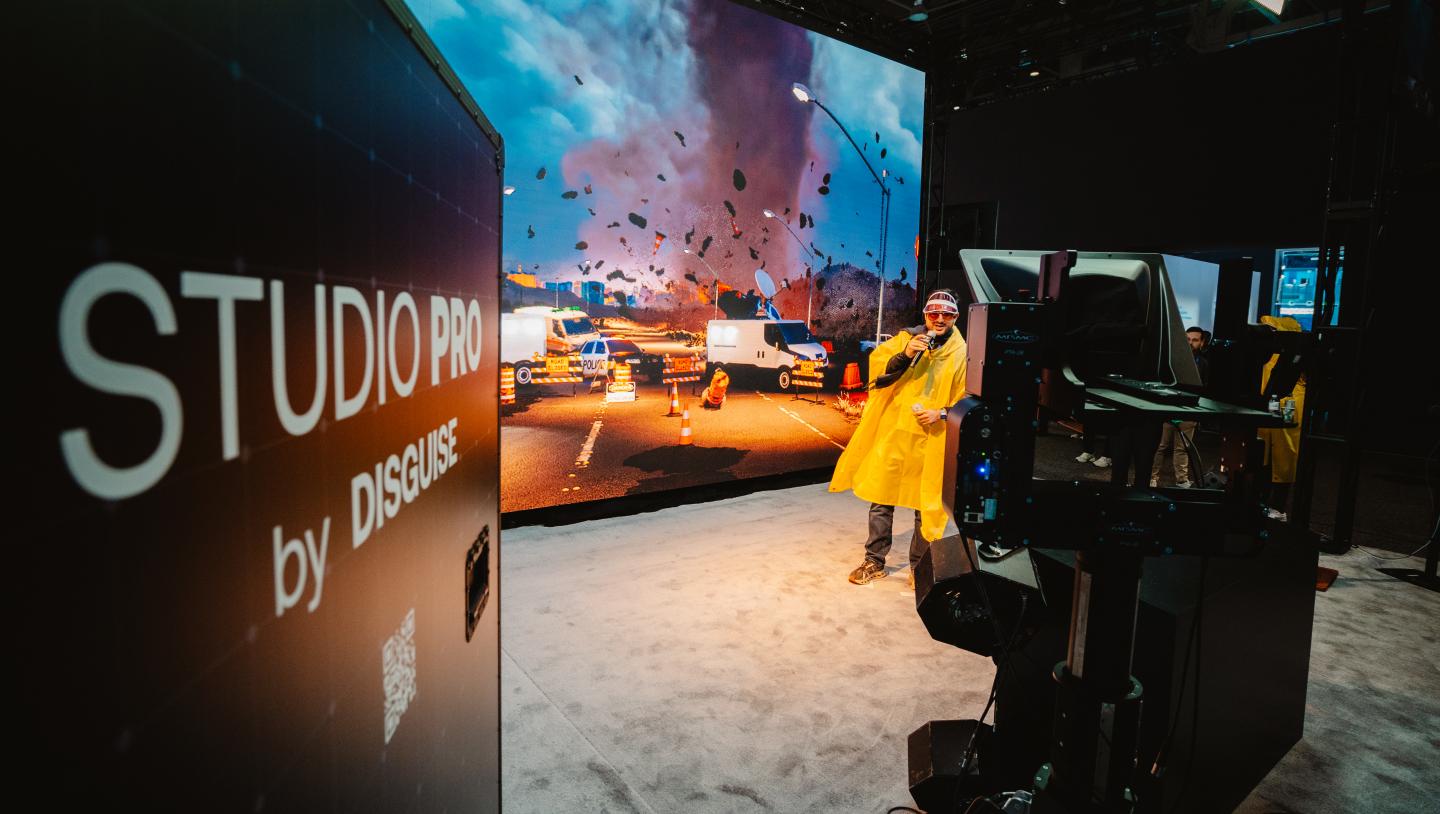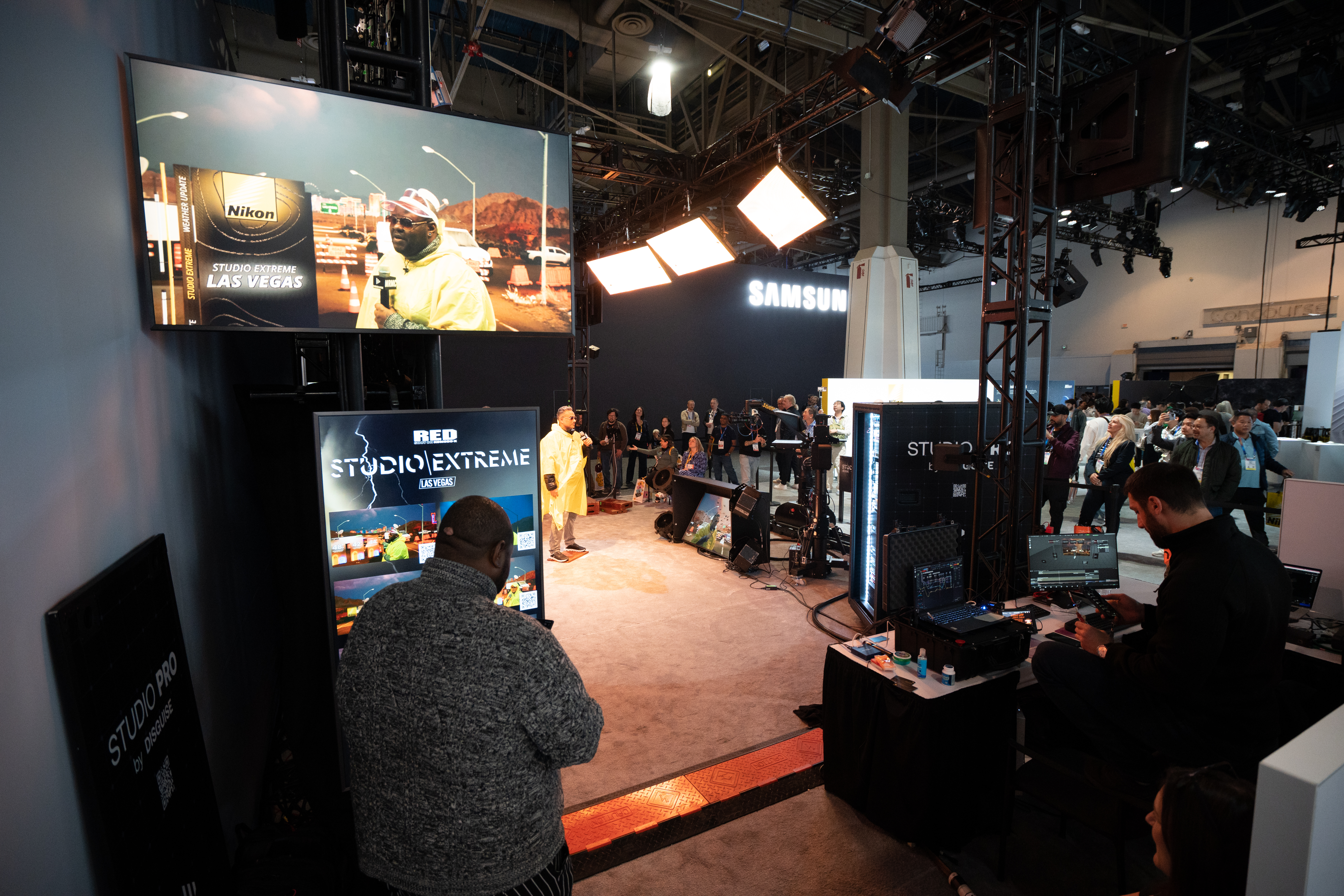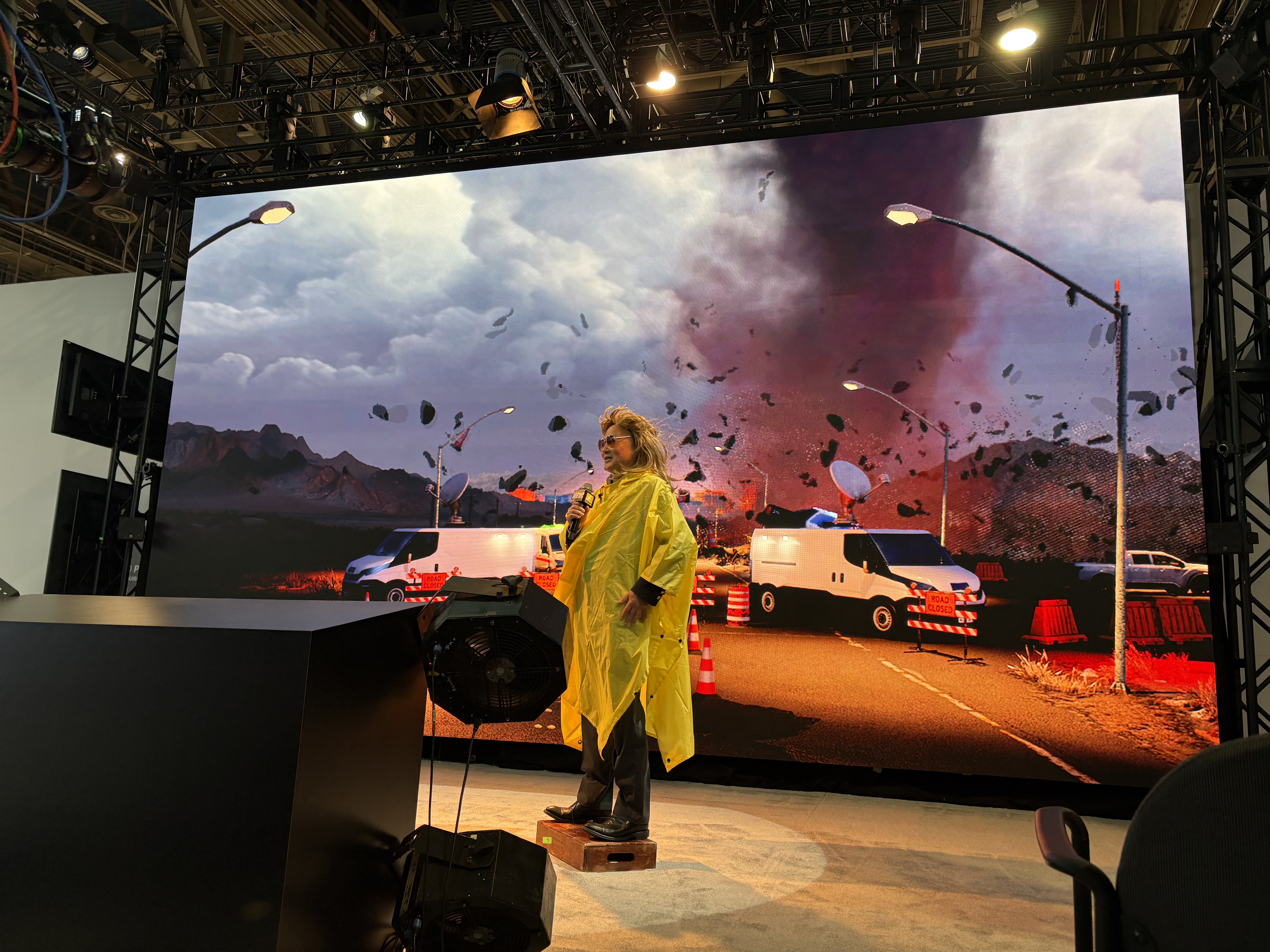Upgrade your Brand Story: Behind the Scenes of our Plug-and-Play Film Studio
Virtual Production

The driver behind today's most valuable brands? Becoming video production powerhouses. With 90 percent of Gen-Z now saying they want more videos from brands, and studies showing that people spend 88 percent more time on websites with video, brand leaders increasingly know that eye-catching live streams, shorts, and even feature documentaries will build lasting connections with customers.
Satisfying this growing demand for video content, however, isn't always easy - with brands typically needing to collaborate with external production teams, or dedicate significant time and resources speccing out their own studio setup if they want to create content with a consistently high production value.
A New Alternative
We partnered with Nikon and its subsidiary MRMC Broadcast at CES to create a new activation that shows how brands can easily create high quality content, faster. How? By using a plug-and-play production studio that can double as an in-person experience to let audiences become truly immersed in your brand’s world.
Built using Disguise’s turnkey virtual production solution, Studio Pro, the activation allowed CES attendees to step into the studio themselves. Participants became meteorologists, delivering a live news report from just outside Las Vegas, which was virtually rendered in Unreal Engine 5 and then displayed on an LED wall. The activation featured an intense weather event with high winds simulated by DMX-controlled fans, all managed by Disguise Designer. Augmented reality elements added to the immersion, placing participants at the heart of the storm. The final feed was downloadable via QR code and shareable on social media with branded framing around the content.

Studio Pro is a turnkey solution that includes everything a brand needs for its own studio including:
- Portable hardware rack including top-tier technology to keep your studio up and running
- High-performance LEDs from ROE Visual
- Expert installation
- Comprehensive training
- Creative content package and retainer add-ons
- 24/7 technical support
“We shipped our Studio Pro rack from the office, plugged it in, and made virtual production happen,” explains Emmy-award-winning virtual production specialist and Lead Unreal Technical Artist at Disguise, Mahe Dewan. “Everything you need except for the content lives in this singular solution, which makes it quite powerful.”
From Concept to Show Floor
To develop the activation within a turnaround time of just six weeks, the Disguise Creative Services team began by using Unreal Engine to develop a storyboard of the visuals and camera movements involved. This storyboard accounted for restrictions specific to CES, such as the harsh lighting conditions on the show floor.
“Our 3D artists, Pablo Carvalho and Marco Mendoza, then used a combination of Blender, Cinema4D and Unreal Engine to create a background consisting of the Vegas skyline with a threatening tornado coming towards us on screen, as well as AR elements such as temperature graphs,” Dewan explains. “To save time, we also used some stock images as well as pre-made Unreal Engine assets from previous projects, such as background rock elements, which we then re-textured and re-lit to ensure they fit into the sequence seamlessly.”
Using Disguise’s Designer software, the scene was then visualised and keyframed with the help of a digital replica of the LED stage as it would appear on the show floor. Designer was also used for DMX control, so that real-world lights and fans would turn on in sync with the visuals whenever someone was experiencing the activation. The fans would ramp up as the tornado got closer, which helped to immerse CES attendees in the final scene.

“Another important element was our soundscape, which was provided by L-Acoustics L-ISA technology,” Dewan continues. “We gave them the final video draft, and they produced an audio file that included everything from sandstorm sounds to a cow that really sounded like it was going from one end of the stage to the other.”
To ensure the experience was repeatable for anyone who stepped into it, the team used Designer’s queuing system to create play and reset buttons to start the activation on-site. There was also a button that could translate the script into several different languages.
The final step involved working with MRMC Broadcast’s Camera Programmer, Gilbert Sawaya. “We used MRMC Broadcast’s compact camera arm, the Studio Bot LT, to ensure the RED Komodo 6K camera would automatically move up or down depending on the height of the person experiencing the activation,” says Dewan. “There were even some shaky camera movements towards the end, when the tornado got close.”
The Future of Brand Storytelling
After a day of testing ahead of the show, the activation was complete. “One of the most confusing parts of getting into virtual production is wondering how to set a studio up,” Dewan explains.
“With this activation, planning and setup was easy, as the whole studio could be shipped in one box. For brands, this could truly help your core values and mission to come through. Just imagine: you could create a new visual universe for your brand with characters, capture them in high-end videos using your virtual production studio, and then ship your studio to a trade show so the public gets to experience it for themselves. The possibilities are endless.”